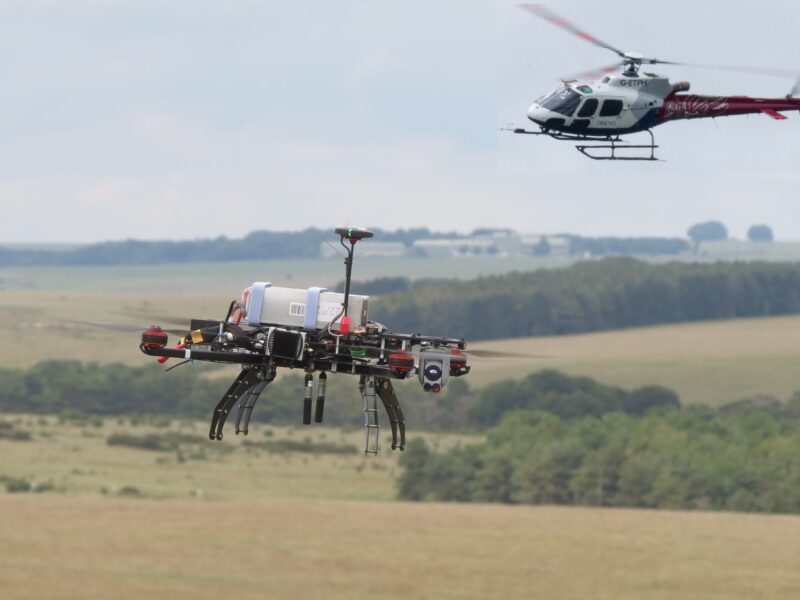
First UK trial of helicopter and AI drone working together
QinetiQ has demonstrated an airborne team of manned aircraft and autonomous drone for the first time in the UK.
The demonstration over the army ranges on Salisbury Plain featured a manned helicopter and a semi-autonomous drone working together in a designated area. An operator on board the helicopter was able to switch between monitoring the images sent back by the cameras on the drone and allowing it to operate independently, searching for and identifying potential targets itself, only alerting the operator when a decision was required.
The work is funded by Army HQ Research and Experimentation using the Defence and Security Accelerator (DASA) competition framework and will be delivered by Defence Science and Technology Laboratory (Dstl) to the British Army in September as part of the Army Warfighting Experiment 2019 (AWE19). There have been several demonstrations of airborne manned/unmanned teams in other countries but the UK’s first successful demonstration is notable as the entire process was controlled through a point and click interface on a portable tablet on board a standard H125 helicopter connected to an IP mesh net radio. This indicates that very little modification is required to a host aircraft to make an airborne manned/unmanned team work effectively.
The system uses Assisted Target Recognition (ATR) to provide the helicopter crew with extended range sensing. Controlled autonomy in the drone reduced the cognitive burden for the operators whilst ensuring compliance with operational and tactical policies. The system provides STANAG 4586 Levels of Interoperability (LOI) equivalent to 2 for sensor data reception, 3 for sensor payload tasking and 4 for platform tasking. This enabled control of the drone to be moved from one person to another securely and effectively throughout the trial. Not only does this ensure an unmanned drone can always be controlled by the person best placed to make decisions, it also paves the way for a more collaborative approach to using unmanned systems.
The team was created using a range of different commercial off the shelf (COTS) technologies from different suppliers. To date, most demonstrations have used products from a single company, so they are designed from the outset to work together as a connected system. Using equipment and machines that were not designed specifically to work with each other showed a more open and technology agnostic approach to manned/unmanned teams is possible.
“To make it possible we had to take a Mission-Led Innovation1 approach and look at how to use what we already had available,” said QinetiQ’s Programme Manager, Rob Scott. “We made full use of our live, virtual and simulated test environments as well as the facilities and resources available within our Long Term Partnering Agreement with the MOD. We’re particularly pleased we could undertake a live testing programme using one of our own H125 helicopters. It provides a realistic platform for repeatable experimentation while saving the UK MOD time and money by not requiring scarce operational resources to be diverted for trials.”The intuitive point-and-click interface allied with advanced automation features allow the crew to not only pre-plan prior to undertaking a mission, but importantly to take full account of highly dynamic events during a mission, changing the tasking of the sensor and platform as mission needs dictate.
The interoperable nature of the standards-based system allows anyone on the IP network to select the sensor imagery or request control of any UAS in the system, while allowing them overall situational awareness of all units on the net.
Related drone articles
- AI UAV MAKER RAISES $100m
- WI-FI BASED APP IDENTIFIES OWNERS
- STARTUP DEBUTS WITH QUADCOPTER THAT CAN FLY FOR 2 HOURS
- DIGITAL TWIN OF UAV PROVIDES PREDICTIVE MAINTENANCE
 If you enjoyed this article, you will like the following ones: don't miss them by subscribing to :
eeNews on Google News
If you enjoyed this article, you will like the following ones: don't miss them by subscribing to :
eeNews on Google News


